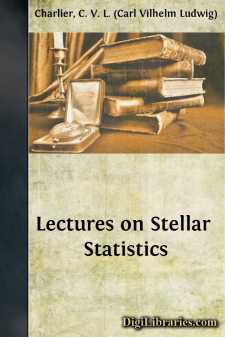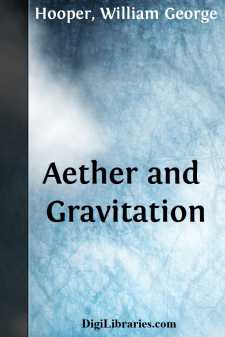Categories
- Antiques & Collectibles 13
- Architecture 36
- Art 48
- Bibles 22
- Biography & Autobiography 813
- Body, Mind & Spirit 142
- Business & Economics 28
- Children's Books 17
- Children's Fiction 14
- Computers 4
- Cooking 94
- Crafts & Hobbies 4
- Drama 346
- Education 46
- Family & Relationships 57
- Fiction 11829
- Games 19
- Gardening 17
- Health & Fitness 34
- History 1377
- House & Home 1
- Humor 147
- Juvenile Fiction 1873
- Juvenile Nonfiction 202
- Language Arts & Disciplines 88
- Law 16
- Literary Collections 686
- Literary Criticism 179
- Mathematics 13
- Medical 41
- Music 40
- Nature 179
- Non-Classifiable 1768
- Performing Arts 7
- Periodicals 1453
- Philosophy 64
- Photography 2
- Poetry 896
- Political Science 203
- Psychology 42
- Reference 154
- Religion 513
- Science 126
- Self-Help 84
- Social Science 81
- Sports & Recreation 34
- Study Aids 3
- Technology & Engineering 59
- Transportation 23
- Travel 463
- True Crime 29
Lectures on Stellar Statistics
Description:
Excerpt
CHAPTER I.
APPARENT ATTRIBUTES OF THE STARS.
1.
Our knowledge of the stars is based on their apparent attributes, obtained from the astronomical observations. The object of astronomy is to deduce herefrom the real or absolute attributes of the stars, which are their position in space, their movement, and their physical nature.
The apparent attributes of the stars are studied by the aid of their radiation. The characteristics of this radiation may be described in different ways, according as the nature of the light is defined. (Undulatory theory, Emission theory.)
From the statistical point of view it will be convenient to consider the radiation as consisting of an emanation of small particles from the radiating body (the star). These particles are characterized by certain attributes, which may differ in degree from one particle to another. These attributes may be, for instance, the diameter and form of the particles, their mode of rotation, &c. By these attributes the optical and electrical properties of the radiation are to be explained. I shall not here attempt any such explanation, but shall confine myself to the property which the particles have of possessing a different mode of deviating from the rectilinear path as they pass from one medium to another. This deviation depends in some way on one or more attributes of the particles. Let us suppose that it depends on a single attribute, which, with a terminology derived from the undulatory theory of Huyghens, may be called the wave-length (λ) of the particle.
The statistical characteristics of the radiation are then in the first place:—
(1) the total number of particles or the intensity of the radiation;
(2) the mean wave-length (λ) of the radiation, also called (or nearly identical with) the effective wave-length or the colour;
(3) the dispersion of the wave-length. This characteristic of the radiation may be determined from the spectrum, which also gives the variation of the radiation with λ, and hence may also determine the mean wave-length of the radiation.
Moreover we may find from the radiation of a star its apparent place on the sky.
The intensity, the mean wave-length, and the dispersion of the wave-length are in a simple manner connected with the temperature (T) of the star. According to the radiation laws of Stephan and Wien we find, indeed (compare L. M. 41) that the intensity is proportional to the fourth power of T, whereas the mean wave-length and the dispersion of the wave-length are both inversely proportional to T. It follows that with increasing temperature the mean wave-length diminishes—the colour changing into violet—and simultaneously the dispersion of the wave-length and also even the total length of the spectrum are reduced (decrease).
The apparent position of a star is generally denoted by its right ascension (α) and its declination (δ). Taking into account the apparent distribution of the stars in space, it is, however, more practical to characterize the position of a star by its galactic longitude (l) and its galactic latitude (b)....












